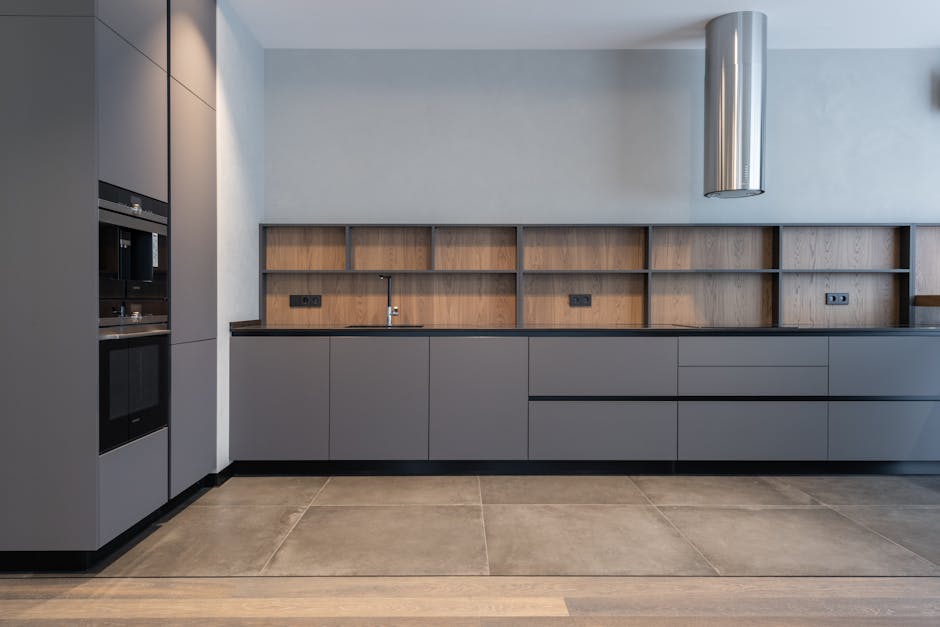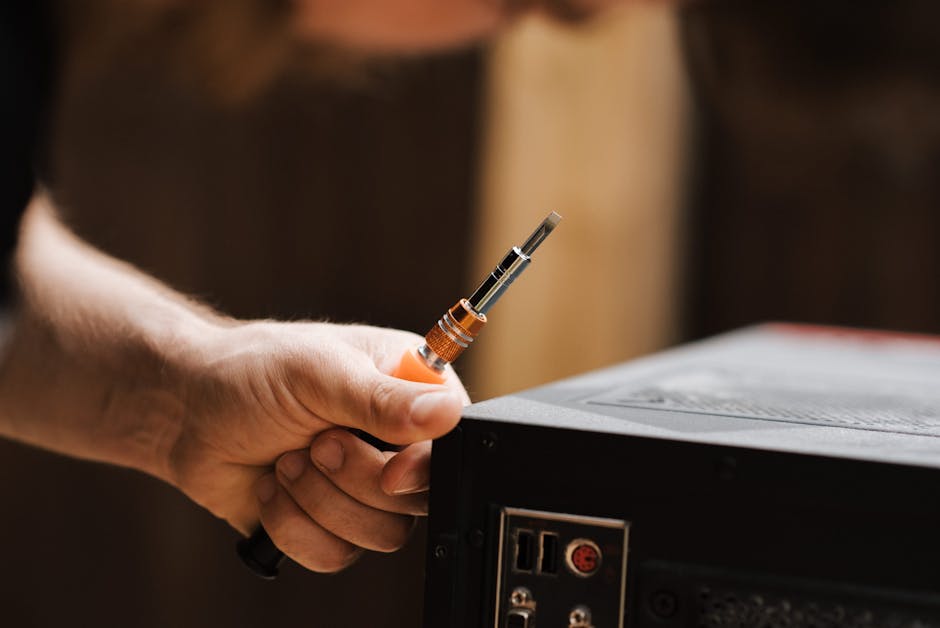Top Signs Your Home Needs an Electrical Sub Panel Upgrade
Introduction to Electrical Sub Panels
An electrical sub panel, in simpler terms, acts like a branch manager for your home’s electrical system. It’s a secondary panel that connects to the main panel but handles electricity distribution to specific areas or high-power appliances. Think of your home’s electrical system as a big company. The main panel is the CEO, overseeing the entire operation. Now, the sub panel is the manager that specializes in a specific department, making sure power gets to where it’s needed most, efficiently and safely. This setup is especially handy in bigger homes or if you’ve added new rooms or heavy-duty appliances that demand more power than what your current system can offer. It’s a critical part of ensuring that your electrical system runs smoothly without overloading a single circuit. So, when we talk about upgrading or adding a sub panel, we’re essentially discussing optimizing your home’s electrical performance and safety.
Understanding the Purpose of an Electrical Sub Panel
An electrical sub panel, simply put, is a mini-service panel. It’s like having a sidekick for your main electrical panel. This buddy helps by splitting the electrical power feed into secondary circuits, providing an extra space for circuit breakers in a home that’s all maxed out on its main panel. If your house is expanding, or you’re adding more power-hungry appliances and gadgets, the sub panel steps up, making sure everything runs smoothly without tripping breakers left and right. It’s not about adding more power to your home; it’s about better managing and distributing the power you’ve already got. Think of it as the director of a play, making sure all the actors are on stage at the right time, so the show goes on without a hitch.
Signs You Need an Electrical Sub Panel Upgrade
Your home might scream for an electrical sub panel upgrade without you even realizing it. Look out for these clear signs. First, if you’re constantly tripping breakers when you use multiple appliances, that’s a red flag. Your current system can’t handle the load. Next, if your lights flicker or dim often, especially when using high-power devices, it’s time to think about an upgrade. Another giveaway? If your panel is warm to the touch, it’s shouting for help. Warm panels can mean your system is struggling and, at worst, could become a fire hazard. Also, if you’re adding more rooms or power-heavy appliances, your existing setup might not cut it anymore. Finally, if your system is old, like original-to-the-house old, it doesn’t just need an upgrade; it demands one for safety and efficiency. Ignoring these signs can lead to bigger problems, so it’s better to address them early.
Frequent Circuit Breaker Trips as a Warning Sign
When your lights flicker or your circuit breaker trips often, it’s not just annoying. It’s your home yelling, “Hey, I need help!” This can often point to a bigger issue, like needing an upgrade to your electrical sub panel. Think of your circuit breaker as the referee of your home’s electrical system. When too many appliances or lights are on at once, it blows the whistle (or in this case, trips) to prevent a potential overload or fire. If you’re resetting breakers more often than you’re tossing out the trash, it’s a strong signal that your current electrical panel can’t keep up with your home’s power demand. You might have added more gadgets or appliances over the years, and your existing setup just isn’t cut out for that kind of load anymore. So, frequent tripping is not just a minor inconvenience—it’s a sign to take action and consider upgrading your electrical sub panel for a safer and more efficient home. Remember, it’s more than just keeping the lights on; it’s about keeping your home safe.
Dimming or Flickering Lights Throughout Your Home
When you turn on appliances and notice that your lights dim or flicker, it’s not just a minor annoyance—it’s a sign your home might be crying out for an electrical sub panel upgrade. This happens because the electrical system can’t handle the load. It’s like trying to run a marathon while breathing through a straw. Enough power just isn’t getting where it needs to go. Basically, your current system is overworked, and adding an electrical sub panel can give it the boost it needs. Think of it as hiring an assistant for your overburdened existing electrical panel. This isn’t something to ignore. Besides being a headache, it can be dangerous, leading to potential fire hazards. So, when your lights act more like they’re part of a spooky movie than a cozy home setting, it’s time to act.
Addition of Major Appliances or Renovations Requiring More Power
When you bring in big appliances like a hot tub or an upgrade to an electric car charger, your home’s hunger for power jumps. This isn’t just about plugging in another gadget; it’s about making sure your electrical system can handle the load without breaking a sweat. If you’re diving into home renovations, especially those that expand your space or add power-hungry features, listen up. Your current electrical panel might be giving you a silent cry for help, signaling it’s time for an upgrade. Think of it as the heart of your home’s electrical system – if it’s too weak, the whole system can falter. Adding a sub panel, or upgrading the main one, ensures your renovations and new appliances get the juice they need without risking outages or, worse, a fire. Before you dismiss that extra breaker tripping as “just another glitch,” consider it a wake-up call. Your home might just be telling you it’s time for an electrical health check.
The Age of Your Current Electrical Panel
The age of your home’s electrical panel is a dead giveaway on whether you need an upgrade. Most panels have a lifespan of 20 to 30 years. If yours is older, it’s time to think about an upgrade. Old panels might not handle today’s power demands—thanks to our love for gadgets and appliances. Plus, the older your panel, the higher the risk of safety issues like fires or electrical shocks. Check the manufacture date or ask an electrician if you’re unsure about your panel’s age. An upgrade isn’t just about adding capacity; it’s about keeping your home safe.
Benefits of Upgrading Your Electrical Sub Panel
Upgrading your electrical sub-panel might seem like a hassle, but trust me, it’s a move you won’t regret. First off, it boosts the safety of your home. Old or outdated electrical panels can be hazards, leading to fires or electrical shocks. With an upgrade, you’re mitigating these risks, keeping your family safe. Then, there’s the capacity issue. As we pile on more gadgets and appliances, our old panels can’t keep up. Upgrading means you can run your dishwasher, charge your electric car, and not trip the breaker every time you microwave popcorn. It also preps your home for the future, allowing for easy additions like that man cave or backyard workshop you’ve been dreaming of. Plus, if you’re thinking about selling, an updated electrical system is a big green check for potential buyers. In short, upgrading your electrical sub-panel means safety, capacity, future-proofing, and increasing your home’s value. Four wins with one smart move.
Preparing for an Electrical Sub Panel Upgrade
Before you decide to upgrade your electrical sub panel, it’s wise to get ready for what’s to come. Preparing isn’t just about making space for the electrician or having the right tools; it’s about knowing exactly why you need the upgrade and what it involves. First, understand your home’s electrical demand. If you’ve added new appliances, like a powerful AC unit or a hot tub, your current setup might be struggling to keep up. Next, have a clear conversation with a licensed electrician. They can assess if an upgrade is necessary and what capacity your new sub panel should have to ensure it meets your needs, both now and in the foreseeable future. Also, preparation means budgeting. Costs can vary based on the complexity of the installation and the specifications of the panel. While you’re at it, check your local building codes and permits. Some areas have strict regulations, and you’ll need the right paperwork to start the work. Preparing for an electrical sub panel upgrade is as much about understanding the process as it is about logistical and financial planning. This ensures the upgrade goes smoothly, meets your home’s demands, and adheres to safety standards.
Conclusion and Next Steps for Homeowners
If you’ve spotted any signs indicating your home might need an electrical sub panel upgrade, like flickering lights, frequently tripped breakers, or you’re planning renovations or adding more power-hungry appliances, it’s time to take action. Your next steps should be practical and aimed at ensuring your home’s safety and your family’s comfort. First, consult with a licensed electrician. They can assess your current electrical system and determine if an upgrade is necessary. If an upgrade is recommended, get a few quotes to understand the costs involved. Remember, investing in your home’s electrical system not only enhances safety but also increases its value. Don’t ignore the signs. Taking action now can prevent more serious issues down the line.








